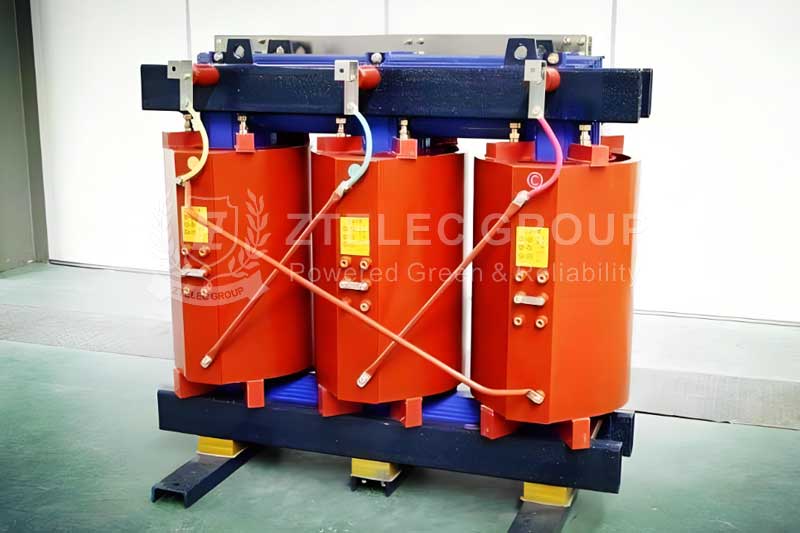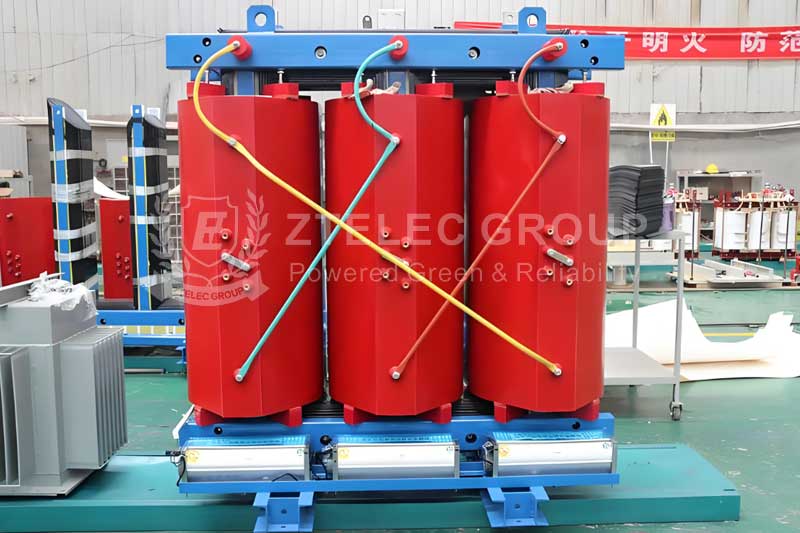Can you use a dry type transformer outside?
In modern power systems, transformers are essential equipment, and dry-type transformers, known for being safe, environmentally friendly, and easy to maintain, are widely utilized. The primary characteristic of dry-type transformers is their use of air as the cooling medium, which provides greater safety and reliability compared to oil-filled transformers.

I. Basic Characteristics of Dry-Type Transformers
A dry-type transformer is defined as one that employs air as the cooling medium, with insulation materials mainly consisting of high-performance substances like epoxy resin. In comparison to traditional oil-filled transformers, dry-type transformers demonstrate enhanced insulation and heat resistance properties, allowing them to function effectively in challenging environments, such as high temperatures and humidity. Additionally, due to the absence of liquid insulation media, dry-type transformers significantly mitigate safety risks associated with fire hazards and leaks.
II. Outdoor Applicability Analysis of Dry-Type Transformers
1. Climate Adaptability
With advancements in technology, the structure of modern dry-type transformers has become increasingly sophisticated, with design considerations addressing the complexities of outdoor environments. To ensure stable operation in various climate conditions, many dry-type transformers undergo treatments for waterproofing, dustproofing, and UV resistance during production. For instance, the use of weather-resistant shell materials effectively counters erosion from wind, rain, and ultraviolet radiation, thereby prolonging the service life of the equipment.
2. Environmental Friendliness
Since dry-type transformers contain no harmful liquids and have very low emissions, they meet environmental protection requirements, making them suitable for installation in environmentally sensitive locations. This makes dry-type transformers particularly applicable in public places such as cities, schools, and hospitals, as well as in industrial environments with high safety standards, thereby reducing the risk of environmental pollution.
3. Operation and Maintenance
Dry-type transformers are generally easier to maintain, typically requiring only regular inspections of the device's terminal connections and the aging condition of the insulation system. In contrast, oil-filled transformers need regular monitoring of oil levels and quality, which increases operational costs and maintenance complexity. Consequently, in outdoor environments, the maintenance advantages of dry-type transformers enhance their applicability.

III. Application Fields
The application fields of dry-type transformers are extensive, particularly highlighted in the following areas:
1. Urban Distribution Networks
In urban environments, where space is limited, dry-type transformers have become vital components of city distribution networks due to their small footprint and operational safety. Their high safety and environmentally friendly characteristics have led to increased implementation in urban centers and residential areas.
2. Industrial Enterprises
In many industrial enterprises, the use of dry-type transformers can effectively reduce fire risks and improve production safety. Therefore, in many strict industrial environments, such as chemical plants and metallurgical factories, dry-type transformers are chosen to ensure production safety and equipment stability.
3. Renewable Energy Facilities
With the rapid development of renewable energy, dry-type transformers are gradually being utilized in projects such as wind and solar power plants. Their efficient cooling performance and environmental advantages make them suitable for use in remote and extreme environments, supporting the effective utilization of renewable energy.
IV. Issues to Consider During Use
Although dry-type transformers have many advantages for outdoor use, several issues must still be noted:
1. Selection of Installation Location
When choosing an installation site for dry-type transformers, care should be taken to avoid direct exposure to extreme weather conditions while ensuring good ventilation for heat dissipation and maintaining normal operating temperatures. It is advisable to select locations that are distanced from other equipment and structures to minimize potential safety risks.
2. Moisture Prevention Measures
In humid or rainy regions, although dry-type transformers possess a certain level of moisture resistance, additional moisture prevention measures should still be taken. This can include installing waterproof covers or employing other protective solutions to enhance the stability and long-term operational capacity of the equipment.
3. Regular Inspection and Maintenance
Regular inspection and maintenance of dry-type transformers are crucial for ensuring their safe and efficient operation. Focus should be on the insulation performance, terminal connections, and cooling system of the equipment, with prompt resolution of any identified issues to prevent failure.
Dry-type transformers are feasible for outdoor use, with their various superior characteristics demonstrating excellent service performance and safety across many applications. However, in actual use, reasonable planning and maintenance based on environmental conditions and usage requirements are necessary to realize the full potential of dry-type transformers. As technology continues to advance, the application scope of dry-type transformers is expected to expand further, injecting new momentum into the intelligent and environmentally friendly development of power systems.
- more+releated article
- 2025-12-13How to Select and Use Phenolic Cloth-base Lami
- 2025-12-13How Much Does Bakelite Sheet Cost? 2025 Price
- 2025-12-13Why are most 3240 epoxy boards yellow?
- 2025-12-13What are the Main Applications of FR4 Epoxy Bo
- 2025-12-13Why Does the Price of Insulating Paperboard Va
- 2025-12-13Heat-Resistant DDP Insulation Paper
- 2025-12-13Comparison of Heat-Resistant DDP Insulating Pa
- 2025-12-13G10 and FR4 Epoxy Boards: Commonly Used for Ge
- 2025-12-13The Price of Heat-Resistant DDP Insulation Pap
- 2025-12-13How to Choose Epoxy Laminate Materials for Gen





